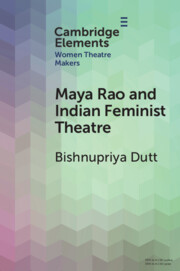Element contents
Maya Rao and Indian Feminist Theatre
Published online by Cambridge University Press: 17 August 2022
Summary
- Type
- Element
- Information
- Series: Elements in Women Theatre MakersOnline ISBN: 9781009071987Publisher: Cambridge University PressPrint publication: 08 September 2022
References
- 4
- Cited by



